As Google strives to better understand exactly what a searcher may be looking for, it may seem harder to achieve and maintain page one rankings within search results. In our latest blog, CEO Ryan Miller discusses two changes impacting how search result rankings appear on Google and what this may mean for you and the content on your website.
Follow along to learn how you can best optimize your website content for success within search results and what to expect from Google in the months to come.
Video Transcription:
Hey everyone and welcome back, it’s Ryan Miller with Etna Interactive and we’re going to talk today about Google and two changes, one that’s already here and one that’s about to come, that may impact how you approach the writing for your procedure pages.
Now over the last couple of weeks, I’ve been in conversation with two of our newest clients, let’s just call them Dr. Junior and Dr. Senior. In Dr. Junior’s case, he’s fresh out of fellowship, he’s going to be opening up a practice later this year and is looking to save a little money so he’s going to do some of his draft copywriting for some of his procedure pages himself. In Dr. Senior’s case, a very different scenario, it’s a surgeon in a very specialized field and he feels, perhaps rightly, that for his unique area of practice that his first drafts need to come from him because of his intimate connection to the subject matter. But in both cases the doctors came to me and said what are the tips, what do we need to do to make sure that our writing stands a chance of being respected by Google and picked up with first page rankings.
The good news is that advice hasn’t changed too much in the last little while. The first big observance, and it’s one that for many I think is counterintuitive in the era of mobile-first internet access, is that pages have gotten longer over the last few years. What we find today is that the majority of the top-ranked pages are going to exceed 1000 words in length. To which, some of you are going to react, yea but c’mon people aren’t going to read all that content, and you’re right people aren’t going to read all the words which is why when you’re writing, you need to take the time to use short sentences inside of short paragraphs so that we can easily consume them on a single mobile screen. In addition to that, we want to use really clear subheadings to divide the content up and help people quickly navigate as they run down the page. What we’ve found today is that pages do tend to rank better when they include rich media elements that create a better experience for the user as they’re reading your content. So that might be things like before-and-after photos, illustrations, and video content.
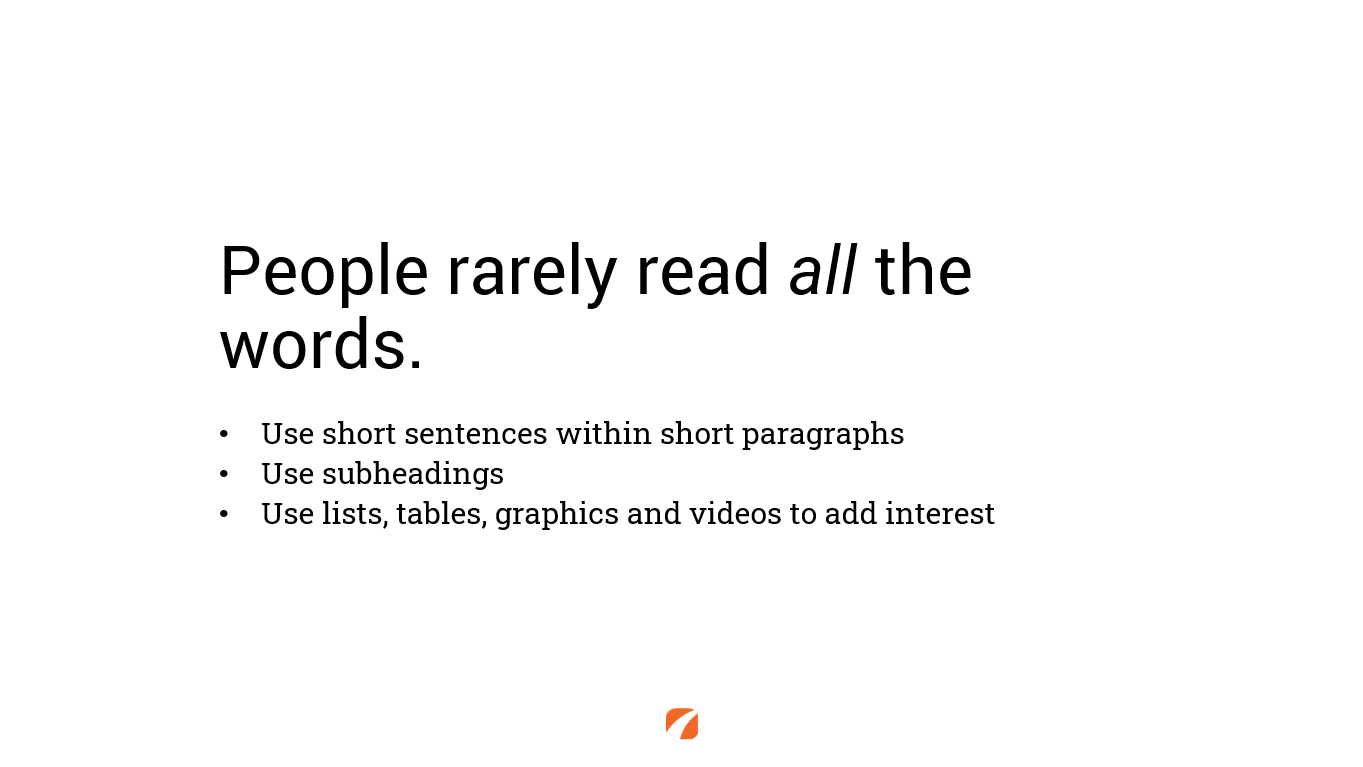
Now, what’s changed? So, there’s two new things, one called subtopics ranking and the other thing is called passage indexing. Now subtopics ranking is actually already out there in the wild impacting how rankings appear on Google where passage indexing is going to be coming sometime a little bit later this year. Let me explain the two of them both to you and then we’ll close with a little bit of the implications, what does it mean for how you approach your procedure page writing.
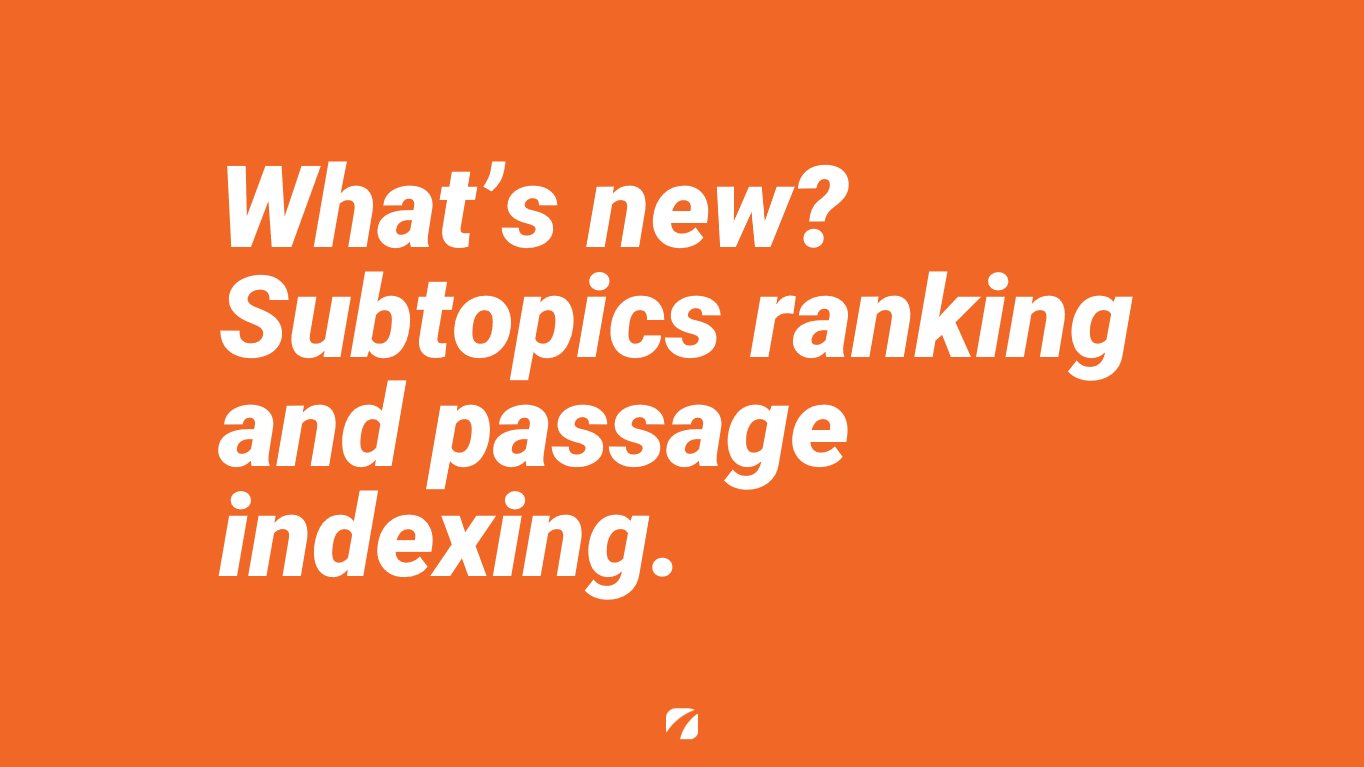
Google is using neural networks, basically, a kind of artificial intelligence, to understand the subtopics that are clustered around a major topic. Specifically, when one particular area of interest if somebody searched generally in that category it allows Google to understand kind of the nuanced related topics that might also be of interest to that searcher.

Now I think there’s a great explanation, Danny Sullivan is one of the spokespeople for Google out there and I love this quote, subtopics doesn’t really change the look of the search results, it only broadens the diversity of the content when it’s going to be useful, or when Google deems it’s going to be useful to the searcher. Now let’s look at what that looks like out there in the wild.

In this example here I searched for ‘facelift los angeles’ and certainly what we all want to continue to strive for is what we see here, the ranking that we’ve helped Dr. Stoker earn there is that number one organic spot. But if we scroll just a little bit farther down the page, it may not look that much different but there’s an important thing that’s happening right now.

The first and the third search result in the box that I’ve just squared off there for you are specifically subtopics. In fact, the first words in the text underneath the clickable line of that search result are ‘cost’ on the first one and on the third one, ‘less invasive facelift’. These are actually second-level headings deeper in the content and what we see is that Google is trying to surface specific different types of content on normal procedure pages to create more diversity to better satisfy a searcher who obviously ‘facelift los angeles’ is a fairly generic search. Google doesn’t know what I’m trying to find. Do I want to know cost, risk, recovery, how it’s performed, who does it, do I want to see before-and-after photos? So, they’re hedging their bets with these new subtopic rankings to try to bring some diversity to what’s there on that single first page.
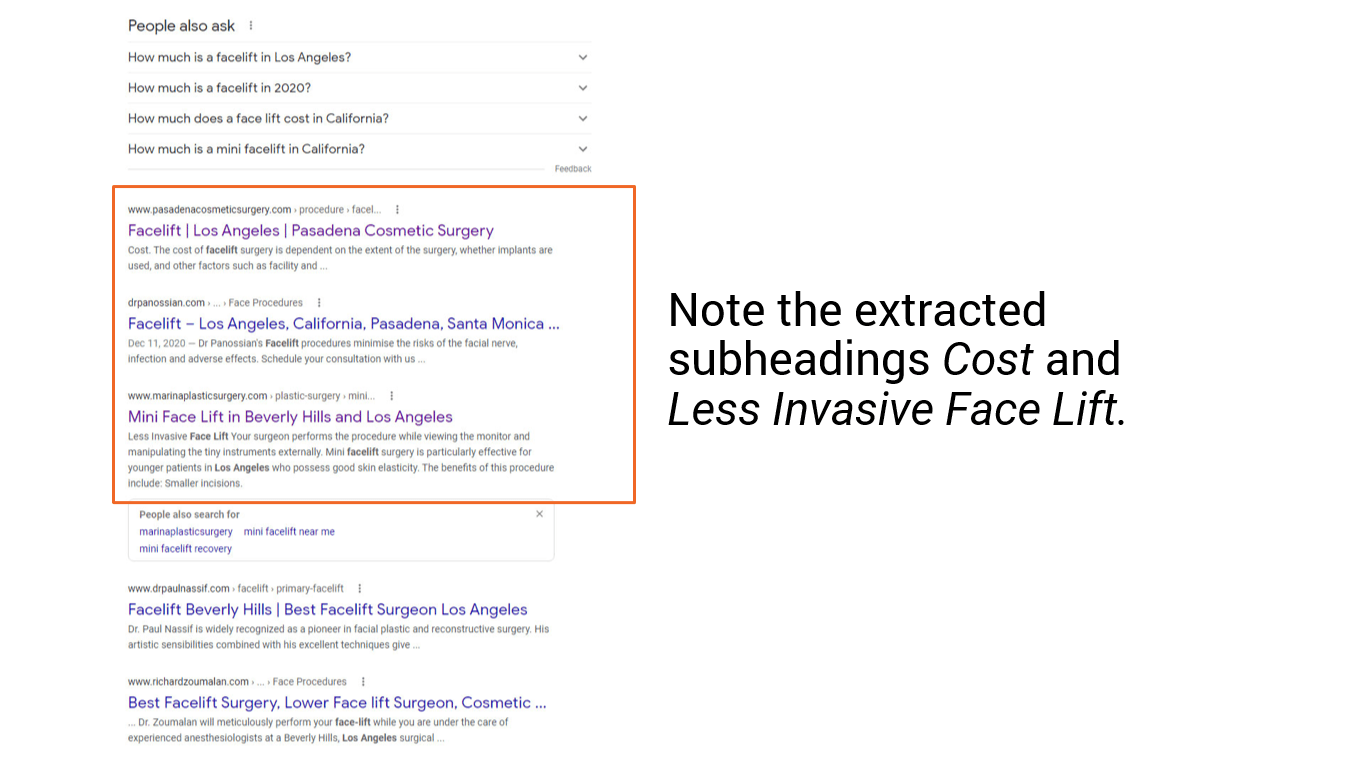
In order to do this even better, they’re going to be introducing later this year is passage indexing. I think it’s important to see the connection between these two things by explaining what passage indexing really does. It’s going to help Google return answers that are buried deep in the page by analyzing the page for its parts. Another way to say this is any individual sub-section in your page, it could be evaluated now for improved rankings on its own, out of the broader context of the full text of a long page. As pages have gotten longer Google is getting smarter about spotting the value and the implications of content that is buried deep down in the page.
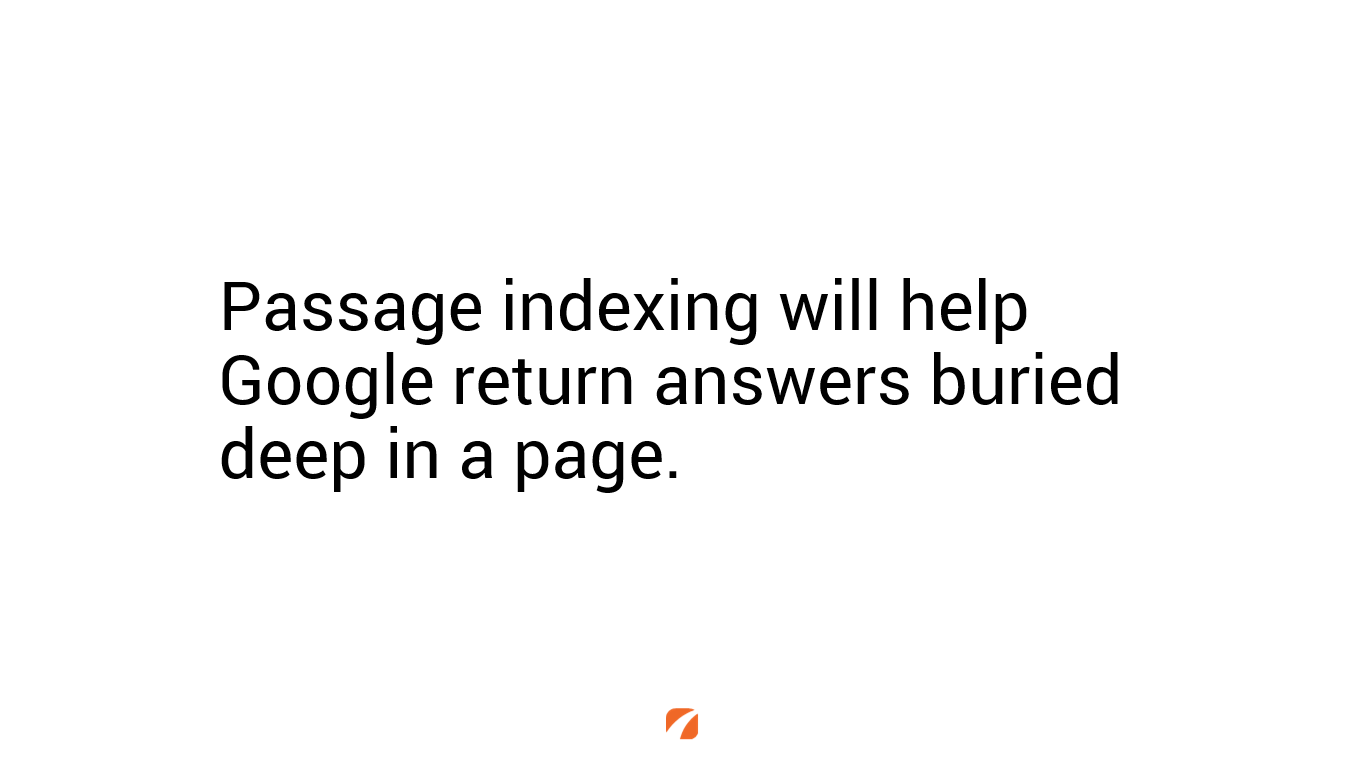
So, what does it all mean for you? Well, the good news is it brings us right back to the advice that I gave in the very beginning. Expand your procedure page content by introducing really clear useful, meaningful subtopics. Remembering that every little vignette that you add into a single page could be evaluated in the near future on its own and could show up as a subtopic ranking on Google’s first page.
In addition to that, you want to embrace content marketing tactics now more than ever. Not only do we need to focus time and energy to enrich our procedure pages, but it’s a smart time to start looking at things like expanding your participation in blogging to gain more content on your site that can be evaluated with these new criteria.
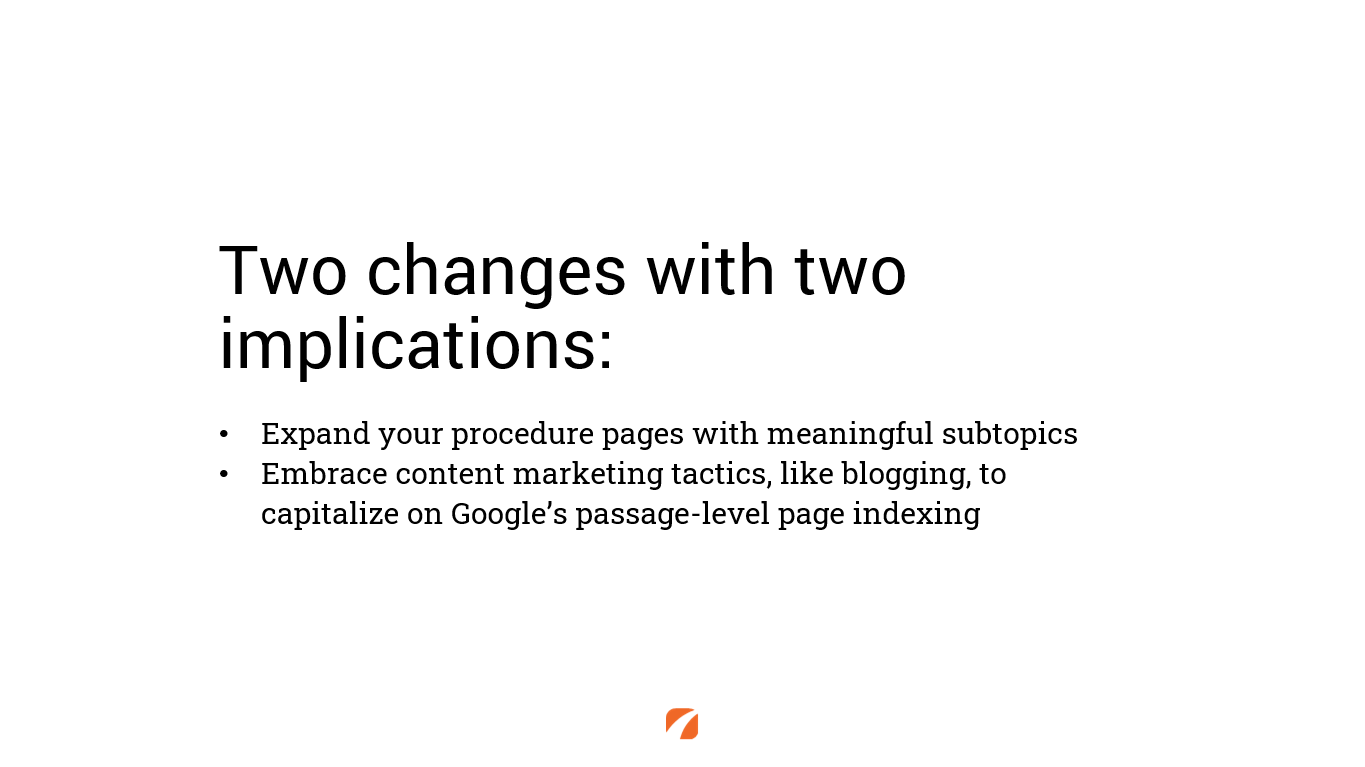
Now if you have questions about content optimization or questions about any online marketing topic at all be sure to reach out to us using the button below, or just leave a comment on our blog or on YouTube.
Contact Us

Leave a Comment